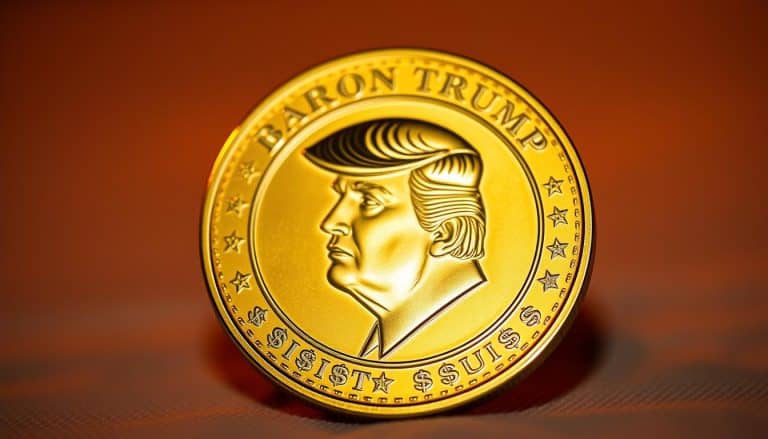The Iconic Trump Cap: Fashion Statement or Political Symbol?
You’ve likely seen it before – the iconic Trump cap, emblazoned with the slogan "Make America Great Again." At first glance, it seems like a simple fashion statement, designed to promote a sense of unity among supporters. But as you take a closer look, its meaning becomes more complex, tapping into deeper social and political tensions. You start to wonder: is this cap a symbol of patriotism, or of hate and xenophobia? The answer, it turns out, depends on who you ask – and that’s where things get interesting.
Key Takeaways
• The Trump cap is a carefully crafted symbol of patriotism and nostalgia, tapping into people’s emotions and creating a sense of belonging.
• Its bold red color and "Make America Great Again" slogan evoke strong emotions, making it a potent symbol of one’s allegiance to a particular ideology.
• The cap sparks a heated debate, pitting fashion enthusiasts against those who view it as a symbol of divisive politics and social tensions.
• Its cultural significance extends beyond fashion, tying into issues like nationalism, immigration, and social justice, and polarizing public opinion.
• The Trump cap is a historical artifact, reflecting the tumultuous politics of the 2010s and ensuring its enduring relevance as a cultural icon.
Origins of the Trump Cap
One of the most recognizable symbols of the Trump brand, the iconic Trump cap, has its roots in Donald Trump’s presidential campaign, which first introduced the caps in 2015. You might remember the controversy surrounding the caps, with some people embracing them as a symbol of patriotism and others condemning them as a hate symbol. Regardless of your stance, it’s undeniable that the Trump cap has become an integral part of American pop culture.
As you explore into the cap’s origins, you’ll discover that it was created to foster a sense of unity among Trump’s supporters. The ‘Make America Great Again‘ (MAGA) slogan on the cap resonated with many who felt disenfranchised and overlooked by the political establishment. The cap became a way for people to express their support for Trump’s message and connect with like-minded individuals. You might recall seeing supporters wearing the caps at rallies, events, and even in everyday life.
Over time, the Trump cap has transcended its initial purpose as a campaign tool. You’ve likely seen it being worn by people from all walks of life, from ardent Trump supporters to those who simply see it as a provocative fashion statement. Love it or hate it, the Trump cap has cemented its place in history as a polarizing symbol that continues to spark conversations and stir emotions. Its enduring presence serves as a reminder of the strong emotions and divisions that defined the 2016 presidential campaign and its aftermath.
Design and Branding Strategy
You can identify a well-designed brand logo or product by how instantly recognizable it is, and the Trump cap’s design and branding strategy played a significant role in its widespread recognition. You see, when it comes to creating a successful brand, it’s not just about slapping a logo on a product and calling it a day. The Trump cap’s design was carefully crafted to evoke a sense of patriotism and nostalgia, with its bold red color and "Make America Great Again" slogan.
You might wonder how such a simple design could be so effective, but that’s the beauty of it. The Trump cap’s design was straightforward, yet powerful. It tapped into people’s emotions and created a sense of belonging among its wearers. The branding strategy behind the cap was also key to its success. By selling the caps at rallies and online, the Trump campaign was able to create a sense of exclusivity around the product. You had to be part of the "in crowd" to get your hands on one, which only added to its appeal.
You can’t deny the impact of the Trump cap’s design and branding strategy. Love it or hate it, the cap has become an iconic symbol of American politics. Its design was clever, and its branding was spot on. Whether you see it as a fashion statement or a political symbol, there’s no denying the Trump cap’s place in history.
Cultural Adoption and Divisions
You can’t ignore the impact of the Trump cap on popular culture. You’ve likely seen celebrities wearing them, either to make a statement or spark controversy, while others face social media backlash for doing so. Now, you’re about to explore how the Trump cap has become a focal point where fashion and politics collide, causing divisions across the country.
Fashion Versus Politics Clash
The Trump cap’s widespread adoption has sparked a heated debate, pitting fashion enthusiasts who see it as a bold statement piece against those who view it as a potent symbol of divisive politics. You can’t help but wonder, what’s behind this clash? Is it a genuine fashion statement, or is it a deliberate attempt to make a political point?
| Category | Fashion Enthusiasts | Politically Motivated |
|---|---|---|
| Style | Bold, statement piece | Divisive, attention-seeking |
| Intent | Self-expression, fashion-forward | Provocation, allegiance |
| Audience | Fashion-conscious, youth-driven | Politically engaged, passionate |
| Message | "I’m fashionably fearless" | "I stand with Trump" |
| Impact | Influences fashion trends | Fuels political divisions |
As you consider these differing perspectives, you begin to see that the Trump cap has become a cultural lightning rod. Its significance extends far beyond the fashion world, tapping into deeper social and political tensions. Whether you see it as a fashion statement or a political symbol, one thing is clear: the Trump cap has ignited a conversation that won’t be silenced anytime soon.
Celebrities Wearing Trump Hats
You see them on the red carpet, at concerts, and on social media – celebrities donning Trump hats. Celebrity sightings of Trump hats at high-profile events and on social media have further fueled the cap’s cultural adoption and exposed deep divisions within the entertainment industry. You might be wondering why some stars proudly wear these hats. For some, it’s a bold statement of allegiance to the Trump brand or ideology. Others might wear it ironically, as a fashion statement devoid of political meaning.
But not all celebrities are keen on wearing Trump hats. Many oppose the values they associate with the Trump presidency, viewing the hat as a polarizing symbol that alienates or offends certain communities. This disconnect highlights existing tensions within Hollywood and between the entertainment industry and American politics. Celebrities can both shape public opinion and face backlash, and with something as emotive and politicized as the Trump hat, controversy is usually close behind.
Social Media Backlash
As celebrities’ Trump hat sightings go viral, they’re often met with a barrage of social media comments that reflect the country’s deepening cultural divisions, with some people praising their boldness and others condemning their choice. You see, social media’s become a breeding ground for outrage and applause, depending on where you stand on the Trump hat controversy.
You can’t scroll through your feeds without stumbling upon fiery debates and Twitter threads that dissect the meanings behind this seemingly simple hat. But here’s the thing: it’s not just about the hat anymore. It’s about which camp you belong to, what values you hold dear, and how you want the world to perceive you.
Here are just a few examples of how the Trump hat backlash has played out on social media:
- Angry tweeters – calling out celebrities for "normalizing" hate speech
- Boycott threads – fans vowing to stop supporting artists who’ve donned the hat
- Defenders chiming in – some saying the hat’s just a harmless fashion statement
- Late-night comedians weighing in – poking fun at the controversy to their millons of followers
Symbolism and Identity Politics
Wearing a Trump cap has become a potent symbol of one’s allegiance to a particular ideology, instantly conveying a set of values and beliefs that can spark both fervent solidarity and intense hostility. You can’t walk down the street without making a statement, whether you intend to or not. The cap’s message is clear: you’re a supporter of Trump’s policies and values, and you’re not afraid to show it.
You’ve got to ponder the power of symbols in identity politics. A hat, a logo, or a slogan can evoke strong emotions and instant associations. In this case, the Trump cap is closely tied to issues like nationalism, immigration, and social justice. By wearing it, you’re signaling where you stand on these issues, and that can be a polarizing move. Some people will see you as a like-minded ally, while others will view you as a symbol of everything they disagree with.
You can’t escape the fact that the Trump cap has become a lightning rod for controversy. It’s not just a fashion statement; it’s a declaration of allegiance to a particular worldview. You’ve got to be aware of the message you’re sending and the impact it may have on those around you. Whether you wear the cap as a badge of honor or a provocation, you can’t ignore the symbolism and the emotions it evokes.
Media Portrayal and Backlash
As you consider the media’s portrayal of the Trump cap, you’ll notice a stark divide in reaction – some outlets treat it as a harmless fashion statement, while others see it as a symbol of controversy. You’ve probably seen this split play out across news channels and online publications, with some pundits defending the cap’s message and others criticizing it. Now, you’re about to see how this divided media reaction contributed to a fierce public backlash that intensified the cap’s notoriety.
Divided Media Reaction
Splashed across the front pages of newspapers and magazines, the Trump cap ignited a firestorm of controversy, with some outlets hailing it as a symbol of patriotism and others condemning it as a divisive emblem of hate. You’d be hard-pressed to find a media outlet that didn’t weigh in on the matter, with many taking a firm stance either for or against the iconic cap.
You’ve probably seen the headlines: some outlets have called the cap a "racist" and "xenophobic" symbol, while others have praised it as a beacon of patriotism. This divided media reaction reflects the deepening chasm between the pro- and anti-Trump camps. Here are some ways the media reaction has been divided:
- Condemnation vs. Praise: Some outlets have skewered the Trump cap as a symbol of hate, while others have extolled it as a symbol of national pride.
- Biased Reporting: Many outlets have been accused of biased reporting, with some alleged to have selectively edited stories to fit their narrative.
- Trump Administration Response: The Trump administration’s response to the controversy has been criticized by some as lacking empathy.
- Free Speech Debate: Others have argued that the cap is protected under free speech laws.
Public Backlash Intensifies
You’ve likely noticed that the heated debate sparked by the Trump cap’s media portrayal has now escalated into full-blown public backlash, with many people taking to social media and the streets to express their outrage. As you scroll through your social media feeds, you’re probably seeing a mix of opinions, from those who see the cap as a harmless fashion statement to others who believe it’s a potent symbol of racism and xenophobia. Protests and rallies have been organized, with demonstrators calling for a boycott of the cap and criticizing those who wear it.
You might be wondering what’s driving this intense backlash. For many, the cap has become a tangible representation of the divisive rhetoric and policies associated with the Trump presidency. Critics argue that wearing the cap is tantamount to endorsing these views, which has sparked outrage and frustration. As the debate rages on, one thing is clear: the Trump cap has become a lightning rod for controversy, sparking a national conversation that shows no signs of slowing down. Whether you see it as a fashion statement or a provocative symbol, the cap’s impact on the cultural landscape is undeniable.
Celebrity Endorsements and Criticisms
Numerous A-list celebrities, including musicians and actors, have publicly endorsed or criticized the Trump cap, sparking heated debates about the cap’s symbolism and the values it represents. You’ve probably seen celebrities like Kid Rock and Ted Nugent proudly wearing the Trump cap, showing their support for the former president’s policies. On the other hand, celebrities like LeBron James and John Legend have been vocal critics of the cap and what it stands for.
The celebrity endorsements and criticisms of the Trump cap have created a media frenzy, with many people taking sides and engaging in heated debates on social media. Some key points to ponder are:
- Influencing Public Opinion: Celebrities have the power to shape public opinion and influence their fans’ views on politics and social issues.
- Polarizing Effect: The Trump cap has become a polarizing symbol, with some people seeing it as a symbol of patriotism and others viewing it as a symbol of racism and xenophobia.
- Free Speech: Celebrities have the right to free speech, and their opinions on the Trump cap are a reflection of their personal values and beliefs.
- Social Responsibility: As role models, celebrities have a social responsibility to ponder the impact of their words and actions on their fans and the wider public.
Ultimately, the celebrity endorsements and criticisms of the Trump cap reflect the deep divisions in American society and the power of celebrity culture to shape public opinion.
Societal Impact and Normalization
One of the most significant effects of the Trump cap’s widespread presence has been its normalization in everyday society, leading many to treat it as a common fashion accessory rather than a contentious symbol. You’ve probably seen it on the streets, in malls, or at sporting events – people wearing the Trump cap as if it’s just another baseball cap. This normalization has contributed to the cap’s ubiquity, making it seem less like a provocative statement and more like a mainstream fashion choice.
As you consider the societal impact of the Trump cap, you might wonder how this normalization occurred. One reason is that the cap’s design is fairly innocuous, lacking any overtly inflammatory imagery or slogans. This has helped to make it more palatable to a broader audience, who may not necessarily associate it with the more divisive aspects of Trump’s presidency. Additionally, the cap’s widespread availability has contributed to its normalization, with many retailers carrying it as a standard item. You can even find knockoff versions at some discount stores, further eroding the cap’s original significance. As a result, the Trump cap has become an unlikely fashion staple, transcending its origins as a campaign souvenir to become a ubiquitous part of American cultural landscape.
Enduring Legacy and Significance
The Trump cap’s normalization in everyday society has laid the groundwork for its enduring legacy, which will likely be shaped by the complex and often contradictory meanings it has accumulated over time. You can’t deny the cap’s impact on popular culture, and its influence will likely be felt for years to come. As you look back on the cap’s history, it’s clear that its significance extends far beyond its origins as a simple campaign slogan.
You’ve seen the cap become a symbol of both support and resistance, often simultaneously. Its meaning has been co-opted and reinterpreted by various groups, from Trump supporters to social justice activists. This complex web of meanings will likely continue to evolve, ensuring the cap’s enduring relevance.
Here are four key aspects of the Trump cap’s enduring legacy:
- Cultural Icon: The Trump cap has become an instantly recognizable cultural icon, symbolizing a particular moment in American history.
- Polarizing Symbol: The cap’s meaning has been contested and reinterpreted, reflecting the deep divisions within American society.
- Fashion Statement: The cap’s design and style have influenced fashion trends, with many designers incorporating similar elements into their collections.
- Historical Artifact: The Trump cap will likely be remembered as a significant historical artifact, reflecting the tumultuous politics of the 2010s.
As you consider the Trump cap’s enduring legacy, it’s clear that its impact will be felt for years to come.
Frequently Asked Questions
Is the Trump Cap Available for Purchase Online or In-Store Only?
You’re searching for a treasure, hidden in plain sight. As it turns out, the Trump cap isn’t that elusive; it’s widely available online through various retailers and the official Trump campaign website, at your fingertips.
What Are the Different Colors and Variations of the Trump Cap?
You’ll find the Trump cap in various colors and variations, including red, white, blue, black, and camouflage. There are also different styles, such as classic, distressed, and snapback, so you can choose the one that suits you best.
How Much Does the Trump Cap Typically Cost?
"You’re probably breaking the bank if you think the Trump cap is pricey! But honestly, it typically costs anywhere from $20 to $50, depending on the variation, quality, and where you buy it."
Are Trump Caps Made in the United States or Overseas?
You’re wondering where Trump caps are made? Well, you’ll find that many of them are manufactured overseas, mainly in China, although some are made in the United States, despite the label’s emphasis on domestic production.
Can I Customize or Embroider My Trump Cap With Unique Designs?
"You can judge a hat by its cover, but can you customize it? Yes, you can! Many retailers offer customization options for Trump caps, allowing you to embroider unique designs, logos, or phrases that fit your style."





 Bitcoin
Bitcoin  Ethereum
Ethereum  Tether
Tether  XRP
XRP  USDC
USDC  Lido Staked Ether
Lido Staked Ether  TRON
TRON  Dogecoin
Dogecoin  Cardano
Cardano  Figure Heloc
Figure Heloc  Bitcoin Cash
Bitcoin Cash  WhiteBIT Coin
WhiteBIT Coin  Wrapped stETH
Wrapped stETH  Wrapped Bitcoin
Wrapped Bitcoin  Wrapped eETH
Wrapped eETH  USDS
USDS  Chainlink
Chainlink  Binance Bridged USDT (BNB Smart Chain)
Binance Bridged USDT (BNB Smart Chain)  LEO Token
LEO Token  WETH
WETH  Zcash
Zcash  Monero
Monero  Stellar
Stellar  Coinbase Wrapped BTC
Coinbase Wrapped BTC  Sui
Sui  Litecoin
Litecoin  Ethena USDe
Ethena USDe  Hyperliquid
Hyperliquid  Avalanche
Avalanche  Shiba Inu
Shiba Inu  Canton
Canton  Hedera
Hedera  World Liberty Financial
World Liberty Financial  sUSDS
sUSDS  Toncoin
Toncoin  USDT0
USDT0  Dai
Dai  Cronos
Cronos  Uniswap
Uniswap  PayPal USD
PayPal USD  Polkadot
Polkadot  Ethena Staked USDe
Ethena Staked USDe  Mantle
Mantle  USD1
USD1  Pepe
Pepe  Rain
Rain  MemeCore
MemeCore  Aave
Aave